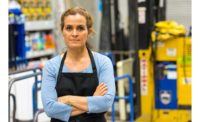How dangerous are robotics to workplace safety, really?

Robots are becoming increasingly popular in workplaces around the globe, especially cobots, the machines designed to work next to humans. But when considering implementing any technology, it's essential to keep safety at the forefront.
What possibilities exist for robots malfunctioning and hurting people or otherwise compromising worker well-being?
Human error could play a role in accidents
Robots are smart, but they almost always need humans to program them for tasks. Those people could make mistakes that lead to unintended consequences. That possibility may be present in the thousands of liability claims associated with Intuitive Surgical and its Da Vinci surgical robot.
In one of the cases involving an incident in Washington State, allegations say that Intuitive Surgical did not provide proper training for a surgeon that used the technology. Other cases discuss internal organ damage, which could happen due to user mistakes. It's essential to realize that the Da Vinci system never operates independently, but gets guided by surgeons using foot pedals, joysticks and a viewer.
Another incident at a German Volkswagen plant involved a worker who died when a robot pushed him against a metal plate. Notably, the robot operated in a cage. Volkswagen believes the situation occurred because of human error since the worker was inside the cage when it happened.
Robots bring many pros and cons to workplaces, especially concerning enhanced labor output and increased consistency. But benefitting from the advantages requires ensuring workers have the knowledge needed to use the machinery safely and confidently.
The reasons for catastrophes are not always easy to pinpoint
Anyone who has ever set foot in a busy factory probably remembers the flurry of activity characterizing it. All those things going on at once make it challenging to find out what happened when robot-related accidents occur.
Such was the case when a maintenance technician at a car parts plant had her skull fatally crushed by a robot. A lawsuit associated with the matter mentions that several safety mechanisms failed, but it's unclear how the robot entered that work area. Also, the woman's colleagues found her after the incident happened, so it could be impossible to find out what went wrong.
With that information in mind, companies need to take proactive approaches to maintain safety even if equipment malfunctions. Plus, simple additions — like using safety tape on the floor to designate safe zones — could minimize problems.
Robot-caused deaths are extremely rare — and new tech should make them even less likely
Despite the examples of events mentioned above, data collected by OSHA reveals that there have been only 40 incidents of injuries or deaths related to robots in the workplace. That's likely in part due to existing standards that evolve along with robotic technologies, including those that require workers to stay a safe distance from active robots.
Many of the tasks robots handle involve duties that are dangerous, dirty or dull for workers. In other scenarios, they help workplaces deal with labor shortages. Forecasts say the welding industry will deal with a 290,000-person shortage by 2020. However, robotic welding equipment helps fill labor gaps, keeping productivity levels high and reducing the likelihood of humans making errors due to fatigue.
Companies are also working to improve robots that could boost safety even if things go wrong. One example is Cobotect, a company implementing airbags for robots, thereby protecting people from sharp components that could otherwise cause harm. Demonstrations involved robots colliding with people who walked away from the scene without injuries afterward.
Other enterprises are working on sensors that make robotic equipment stop if it comes too close to humans. There's also ongoing research to find out what speed constitutes a lethal force for robots working around humans.
Robots used to safeguard humans and animals
Some robots keep both humans and animals safe. Cargill recently developed a robotic cattle driver that it uses to move cows instead of relying on humans to do it. The machine mimics the arm-waving movements people use to herd cattle, and it allows operators to talk to the creatures to encourage them to move.
This technology protects workers from cows that weigh more than 1,000 pounds. The robot should improve animal welfare by reducing stress caused by human contact too.
Safe use of robots requires following best practices
As explained above, robots don't often hurt humans. They should, then, be considered safe to use in workplaces and could save humans from engaging in risky work.
But even the smartest robots could fail if companies don't learn how to use them safely and pass on that knowledge to employees. Investing in some of the new technology mentioned above may promote safety as well.
Looking for a reprint of this article?
From high-res PDFs to custom plaques, order your copy today!






